James Maliszewski's Blog, page 7
August 22, 2025
Lovecraft and Adventure Fantasy
My friend and fellow creator, Zzarchov Kowolski, wrote a very interesting – and, in my opinion, largely correct – post over on his Patreon entitled "Lovecraft and Adventure Fantasy." Don't worry, it's a public post, so you don't have to become a member to read it. Of course, Zzarchov makes good stuff worthy of your support, so you should probably become a member anyway (modesty precludes my bidding you to do the same for me).
I mention this because some of what Zzarchov writes in his post dovetails with things I'll be saying in an upcoming post of my own and thought it'd provide additional food for thought on a topic that's increasingly becoming near and dear to me. More on that next week!
The Dream-Ship Captain
The Dream-Ship Captain by James Maliszewski
A Dreamlands Character Class in Honor of Lovecraft's Birthday
Read on SubstackAugust 21, 2025
HPL in Astounding Stories
Because of its length, At the Mountains of Madness appeared in three consecutive issues of Astounding Stories (February–April 1936). Each installment featured illustrations (by Howard Brown), noteworthy as some of the earliest artwork connected to a Lovecraft tale. A few are especially significant, as they provide the first published depictions of the Old Ones (Elder Things) and shoggoths.
The first issue from the February 1936 issue shows the base camp of the Lake Expedition, with the city of the Old Ones in the distance.
 This issue also includes two illustrations of the Old Ones themselves.
This issue also includes two illustrations of the Old Ones themselves.
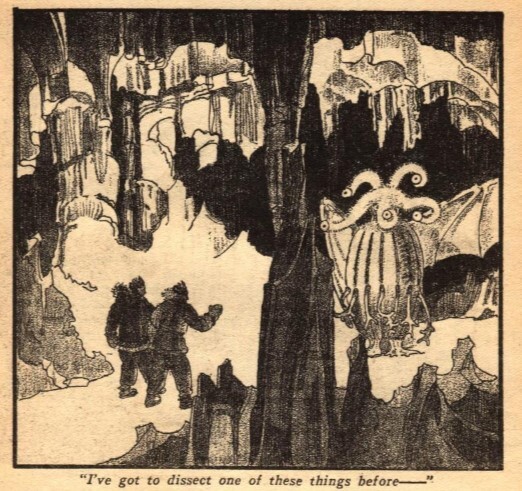
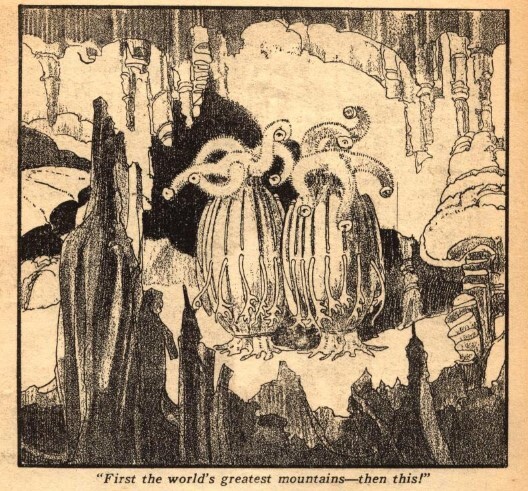 The March 1936 issue opens with a depiction of not just the Old Ones and their city but also a shoggoth, which looks very similar to the one that appears on the cover of the February issue.
The March 1936 issue opens with a depiction of not just the Old Ones and their city but also a shoggoth, which looks very similar to the one that appears on the cover of the February issue.
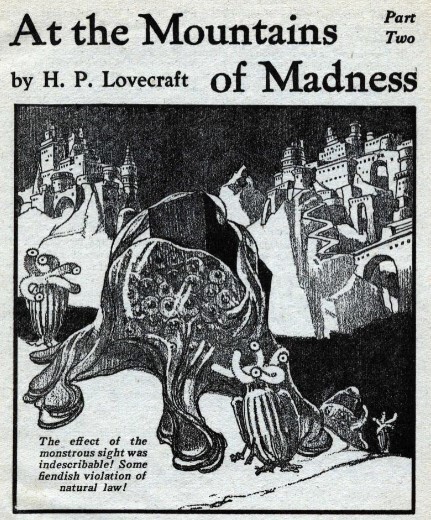 We then get more of both the Old Ones and their city.
We then get more of both the Old Ones and their city.

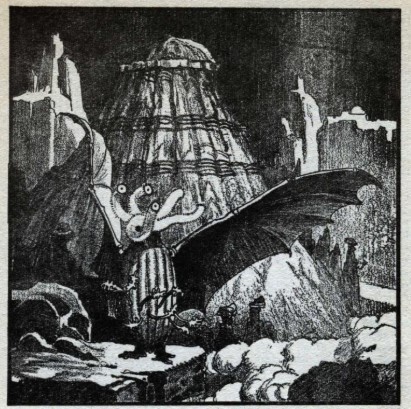
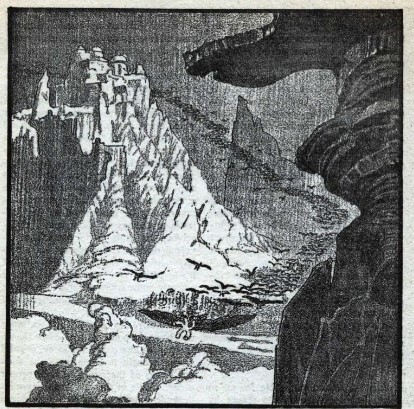 The March 1936 issue contains only a single illustration, again of the city of the Old Ones. At the bottom right, you can see two of the expedition members fleeing the city ahead of the shoggoth (not depicted, so far as I can tell).
The March 1936 issue contains only a single illustration, again of the city of the Old Ones. At the bottom right, you can see two of the expedition members fleeing the city ahead of the shoggoth (not depicted, so far as I can tell). In my opinion, these are all really striking illustrations – and apparently Lovecraft agreed. In a letter to August Derleth, he stated that, "The illustrator drew the nameless Entities precisely as I imagined them." Very high praise indeed!
In my opinion, these are all really striking illustrations – and apparently Lovecraft agreed. In a letter to August Derleth, he stated that, "The illustrator drew the nameless Entities precisely as I imagined them." Very high praise indeed! I'll have more to say about the illustrations from "The Shadow Out of Time," I'll save that for yet another post.
August 20, 2025
HPL in Weird Tales
While most interested parties nowadays know that H.P. Lovecraft's stories almost all appeared in the pages of pulp magazines during the 1920s and '30s – the vast majority of them in "the Unique Magazine," Weird Tales – what they may not know is that a great many of these appearances were accompanied by illustrations. I posted a couple of these at the start of the month, but I thought readers might enjoy seeing a few more of these, particularly those associated with some of his more famous yarns.
This one, for example, depicts the bayou ceremony described by Inspector Legrasse in "The Call of Cthulhu."
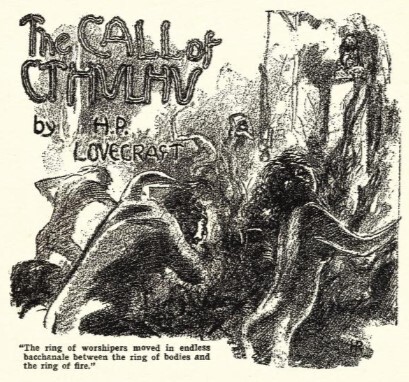 Here's an imaginative illustration of Wilbur Whateley's twin brother in "The Dunwich Horror."
Here's an imaginative illustration of Wilbur Whateley's twin brother in "The Dunwich Horror."
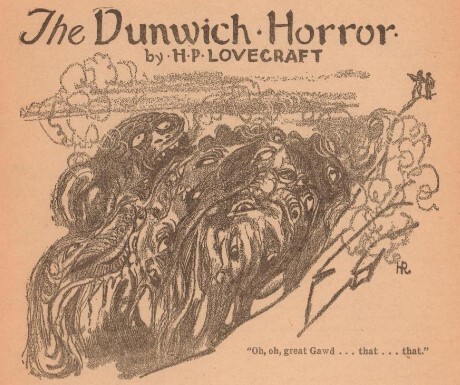
This piece shows the end of "The Whisperer in Darkness," when Professor Wilmarth finds the face and hands of Henry Akeley left behind in the chair in which he'd been sitting for most of the story.
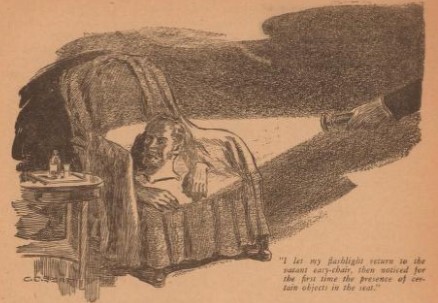 Disappointingly, only one Lovecraft-written story ever appeared on the cover of Weird Tales, "Under the Pyramids," but it did so both with a changed title ("Imprisoned with the Pharaohs") and a Harry Houdini byline (no surprise, since HPL had been hired by Houdini to be his ghost writer).
Disappointingly, only one Lovecraft-written story ever appeared on the cover of Weird Tales, "Under the Pyramids," but it did so both with a changed title ("Imprisoned with the Pharaohs") and a Harry Houdini byline (no surprise, since HPL had been hired by Houdini to be his ghost writer).

Lovecraft had much better luck in this regard with Astounding Stories, which featured two of his tales on the cover, starting with At the Mountains of Madness, which features what is likely the first ever illustration of a shoggoth.
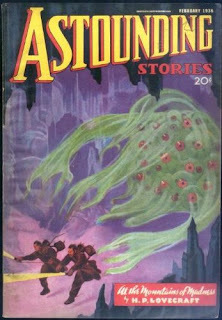 This was soon followed by "The Shadow Out of Time."
This was soon followed by "The Shadow Out of Time."
 Both of the Astounding appearances also include interior artwork as well, some of which is quite interesting and probably deserving of a separate post.
Both of the Astounding appearances also include interior artwork as well, some of which is quite interesting and probably deserving of a separate post.
August 19, 2025
Natal Felicitations

Today being the birthday of Howard Phillips Lovecraft – his 135th, to be precise – I would normally dedicate a post to him and his memory. This year, because I've already devoted the entire month of August to that purpose, I thought instead I would simply link to my previous HPL birthday posts, especially for the benefit of those who weren't reading this blog years ago.
Regardless, today's the day to celebrate Lovecraft memory as you see fit (or not). I myself will be re-watching the H.P. Lovecraft Historical Society's excellent films based on "The Call of Cthulhu" (which I strangely have never reviewed here) and The Whisperer in Darkness (which I have).
Grognard's Grimoire: Moon Prowler
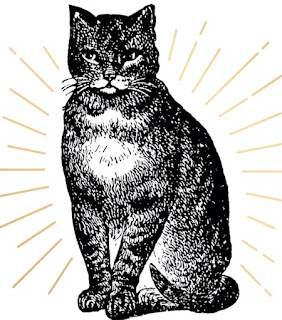 Hunter in shadow. Wanderer in dream. Watcher beneath the moon.
Hunter in shadow. Wanderer in dream. Watcher beneath the moon.
Hit Dice: 1d4
Maximum Level: 9
Armor: None (see below)
Weapons: Claws, small melee weapons (see below).
Languages: Alignment,Dreamspeech, Feline, Moonspeech.
A moon prowler is no ordinary feline. Sleek and clever, with eyeslike twin moons and a mind sharp as a knife’s edge, she prowls theDreamlands with an ease no human could match. She speaks in purrs andriddles, slips through shadows like silk, and leaps across rooftops asthough gravity were an optional courtesy. She is feared andrespected by all, for the law of the Dreamlands is clear: no manmay kill a cat.
Prime requisite: A moonprowler with at least 13 DEX gains a 5% bonus to experience. If DEXis 16 or higher, the moon prowler gets a +10% bonus.
CombatA moon prowler cannot wear armor of any kind. However, her uncanny agility grants her a base AC 7 (modifiedfurther by DEX). She prefers to fight with her claws (1d3 damage), but may use melee weapons suited to her size (referee’sdiscretion).
Feline AdvantagesA moon prowler can squeeze through any opening large enough for her head and balance on narrow surfaces (ledges, ropes) withoutrequiring a check.
1st–4th level: Immune to normal falling damage from heights up to 20’.5th–7th level: This increases to 30’.8th–9th level: This increases to 40’.Feline CurseAnyone who kills a moon prowler is cursed.
Immediately suffers a –4 penalty on all rolls made at night.Cats, whether ordinary or dream-born, are always hostile.Lasts until the killer dies or an appropriate penance is made (referee's discretion)Feline DrawbacksA moon prowler cannot carry heavy burdens. Beyond a dagger and afew small items, she refuses loads. She also loathes water, avoidingit unless magically compelled or under dire circumstances.
Keen SensesThanks to heightened hearing and smell, moon prowlers have a2-in-6 chance to:
Detect hidden or invisible creatures nearby.Notice unusual sounds, scents, or disturbances in their surroundings.Moon LeapWhen under moonlight, a moon prowler may leap up to 30’horizontally or 15’ vertically. This ability may be usedboth in and out of combat.
Nine LivesOnce per day, a moon prowler may avoid the effects of a singleattack, spell, trap, or other hazard that would otherwise kill her.
Silent StalkerIn dim light or darkness, a moon prowler surprises opponents on a1–4 on 1d6. In full daylight, this only appliesagainst distracted or unaware targets.
Moon Prowler Level Progression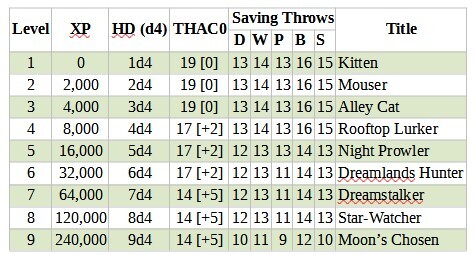 D: Death / poison; W: Wands; P: Paralysis / petrify; B: Breath attacks; S: Spells / rods / staves.
D: Death / poison; W: Wands; P: Paralysis / petrify; B: Breath attacks; S: Spells / rods / staves.
August 18, 2025
The Articles of Dragon: "Giants in the Earth" (Issue #36)
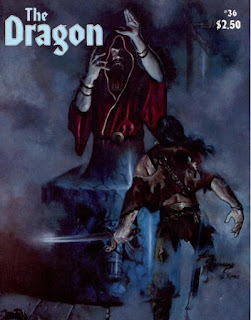 "Giants in the Earth" was an irregular series of articles that appeared in Dragon between issues #26 (June 1979) and #61 (May 1982). Co-written by Lawrence Schick and Tom Moldvay, its purpose was to present notable characters from literature in (A)D&D terms. During its run, more than 40 characters made an appearance, running the gamut from John Carter of Mars to Maal Dweb to Reepicheep and more. While certain authors, like Jack Vance and Fritz Leiber, and their creations receive lots of attention, others show up more infrequently.
"Giants in the Earth" was an irregular series of articles that appeared in Dragon between issues #26 (June 1979) and #61 (May 1982). Co-written by Lawrence Schick and Tom Moldvay, its purpose was to present notable characters from literature in (A)D&D terms. During its run, more than 40 characters made an appearance, running the gamut from John Carter of Mars to Maal Dweb to Reepicheep and more. While certain authors, like Jack Vance and Fritz Leiber, and their creations receive lots of attention, others show up more infrequently.Despite his foundational importance to the literature that inspired the hobby, a character from the works of H.P. Lovecraft appears only once in "Giants in the Earth" and the choice is an odd one, at least in my opinion. The column from issue #36 (April 1980) features Richard Upton Pickman, here styled the "King of the Ghouls." Here are the game stats that accompany his description, along with a portrait that looks to me as if it was drawn by Jeff Dee (there is no credit accompanying either the article or the illustration):
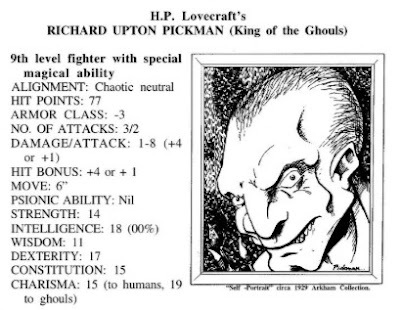 There are certainly a number of things one could discuss about this write-up – feel free to do so in the comments – but, for me, what's more interesting is the accompanying description of Pickman. For example, the text states that he "wears +3 plate armor (no shield) and carries a +1 sword which is +4 versus ghoul enemies (most living creatures)." What a bizarre detail! I say that, because Pickman is presented in the article just as he is in "Pickman's Model." He's a Boston artist whose work is shunned by respectable galleries for its disturbing subject matter. Though he is now himself a ghoul, he's nevertheless a man of the 20th century, not some medieval fantasy characters. It's very odd.
There are certainly a number of things one could discuss about this write-up – feel free to do so in the comments – but, for me, what's more interesting is the accompanying description of Pickman. For example, the text states that he "wears +3 plate armor (no shield) and carries a +1 sword which is +4 versus ghoul enemies (most living creatures)." What a bizarre detail! I say that, because Pickman is presented in the article just as he is in "Pickman's Model." He's a Boston artist whose work is shunned by respectable galleries for its disturbing subject matter. Though he is now himself a ghoul, he's nevertheless a man of the 20th century, not some medieval fantasy characters. It's very odd.Beyond that, the text presents six examples of Pickman's paintings. Each one is given a title and a magical effect if viewed.
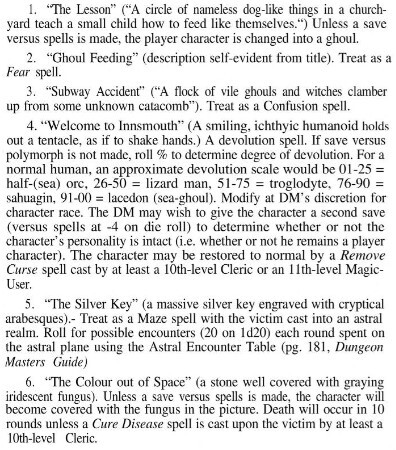 The first three paintings listed – "The Lesson," "Ghoul Feeding," and "Subway Accident" – are all lifted straight from "Pickman's Model," while the last three are references, either direct or indirect, to famous Lovecraft stories. I find the inclusion of "The Silver Key" notable, since protagonist of the story with which it shares a name, Randolph Carter, eventually meets Pickman in The Dream-Quest of Unknown Kadath. The article also notes that each of these paintings has a saving throw versus fire of 10, suggesting that it's quite likely someone might seek to burn them in order to stop their deleterious effects.
The first three paintings listed – "The Lesson," "Ghoul Feeding," and "Subway Accident" – are all lifted straight from "Pickman's Model," while the last three are references, either direct or indirect, to famous Lovecraft stories. I find the inclusion of "The Silver Key" notable, since protagonist of the story with which it shares a name, Randolph Carter, eventually meets Pickman in The Dream-Quest of Unknown Kadath. The article also notes that each of these paintings has a saving throw versus fire of 10, suggesting that it's quite likely someone might seek to burn them in order to stop their deleterious effects.More than halfway through The Shadow over August, it's been a bit of a struggle to find Dragon magazine articles that connect directly – or even indirectly – to H.P. Lovecraft and his legacy. I would have thought there'd be more examples of this kind of thing, especially from the period prior to 1980. As it turns out, that's not the case and I find myself wondering why ...
Grognard's Grimoire: Dreamer
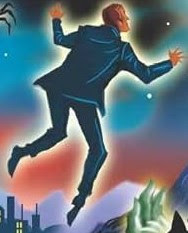 With apologies to Peter von Sholly
With apologies to Peter von Sholly
Stranger in waking life. Adventurer of the Other World. King in dreams.
PrimeRequisite: WIS
HitDice: 1d6
MaximumLevel: 10
Armor:None
Weapons:Any
Languages: Alignment, Common, Dreamspeech
A dreamer is a mystic who slips beyond the borders of waking reality intostrange and hidden realms. His body may be plain and earthbound,but his mind wanders distant dimensions where wonder and dreadintertwine. He may return with uncanny powers – or lose himself forever. In the waking world, a dreamer often serves as a seer,prophet, or enigmatic wanderer, forever shaped by what he has seen.
CombatA dreamer can use any weapon, but he is unable to use to shields or wear any kind of armor.
Between Two WorldsIf a Dreamer is reduced to 0 hp in the Dreamlands, his body in the Waking World convulses and falls into a deathlike coma. He vanishes from the Dreamlands immediately, reappearing in his mortal body after 1d6 days of real-world time. During this period, he cannot enter the Dreamlands by any means.
However, each time a Dreamer is “slain” in the Dreamlands, there is a 1-in-6 chance that his soul becomes untethered. If this occurs, his waking body dies instantly and his spirit is trapped in the Dreamlands forever, unless restored by magic or divine intervention capable of true resurrection. Thereafter, any subsequent death is permanent.
Starting at 7th level, this risk is reduced to 1-in-12, reflecting mastery over his dream-self.
Dream LoreAt 1st level, a dreamer must choose one of the following:
Moon Scholar: Has studied the secret languages of the moonlit realms. Gains the ability to speak and read one additional ancient or alien tongue (e.g. Feline, Moonspeech, etc.)Oneiric Talisman: Possesses a relic from dreams that anchors thought. Once per day, may re-roll a failed saving throw versus attempts to alter thoughts, emotions, or will.Prophetic Memory: Once per day, may declare an event as something foreseen in a dream. Gains +4 bonus on one related action.Silver Veil: The mind slips through lies and glamour. Gains a +2 bonus to saving throws against effects that disguise reality, such as illusions and other deceptions of sight, sound, or thought.Dream PowersA dreamer does not cast spells but instead manifest unpredictable powers from the Dreamlands. To do so, roll 1d8 twice on the Dream Powers table below and select one of the results. The chosen power may be used immediately or held until the end of the dreamer’s next action, after which it fades if unused and still counts toward the daily limit. Only one power can be held at a time. At levels 3, 6, and 9, a dreamer may choose one, two, and three of his daily powers respectively instead of rolling for them. Six hours of sleep restore all daily uses and remove any held power.
Forgotten Memory: Target forgets last 1d6 turns (save versus spells negates). Can erase knowledge of events, questions, or spells.Gaze Beyond the Veil: Ask the referee one question about the situation, the future, or a hidden truth. The answer may be symbolic or vague unless manifested while sleeping.Healing Light: Touch restores 1d8 + level HP. Undead take damage instead.Moonblade: Summons a +1 glowing sword (1d8 dmg, lasts 1 turn, magical, parry 1d4 dmg once/round).Oneiric Firebolt: 120' range, 2d6 dmg (save versus spells for half). Magical fire. On failed save, target also hallucinates for 1 round.Phantom Passage: Teleport self + 1 willing target up to 60'. Must know the destination. Cannot pass through stone or magical wards.Sleep of the Silver Gate: Affects up to 3 HD of creatures (no save if HD ≤ 1). Sleep lasts 1d6 turns.Summon Dream-Beast: Conjures a 2 HD creature (AC 7 [12], 1d8 bite, morale 10, lasts 1 turn or until slain).Dream SurgeWhen a dream powers rolls yield the same result on both dice, roll 1d20 to determine an additional consequence.
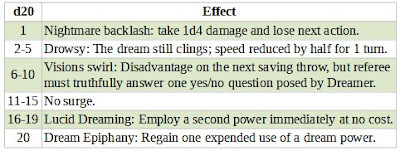 After Reaching 9th Level
After Reaching 9th LevelAt 9th level, a dreamer attracts 1d6 followers: dream-touched mystics, alien poets, or seers. Instead of a fortress, a Dreamer may establish a hidden dream-sanctum, accessible only through ritual sleep.
Dreamer Level Progression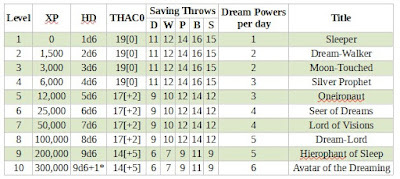 *Modifiers from CON no longer apply.
*Modifiers from CON no longer apply.
D: Death / poison; W: Wands; P: Paralysis / petrify; B: Breath attacks; S: Spells / rods / staves.
August 17, 2025
Pulp Fantasy Library: Through the Gates of the Silver Key
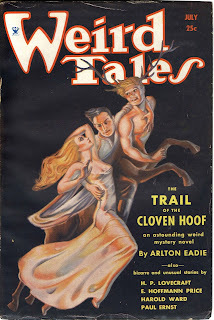 1929 saw the publication of H.P. Lovecraft's "The Silver Key," a wistful, semi-autobiographical tale of Randolph Carter, his recurring dreamer-protagonist. In that story, Carter, now middle-aged, finds himself disillusioned with the mundane world, bereft of the golden moments of his youth when he roamed the Dreamlands freely. After discovering an old silver key in his ancestral home, Carter then departs for the wooded hills of his boyhood and disappears.
1929 saw the publication of H.P. Lovecraft's "The Silver Key," a wistful, semi-autobiographical tale of Randolph Carter, his recurring dreamer-protagonist. In that story, Carter, now middle-aged, finds himself disillusioned with the mundane world, bereft of the golden moments of his youth when he roamed the Dreamlands freely. After discovering an old silver key in his ancestral home, Carter then departs for the wooded hills of his boyhood and disappears.For Lovecraft, that was enough, but not so for his friend, E. Hoffmann Price. He wondered, what really had happened to Carter? During HPL's visit to New Orleans in June 1932, Price suggested to him the idea of a sequel, which he then proceeded to draft. The sequel, which Price titled "The Lord of Illusion," drew on his interests in Theosophy, Eastern philosophy, and occult cosmology. With some reluctance, Lovecraft agreed to revise it and, as often happened in such collaborations, “revision” really meant extensive rewriting. By the end, Price estimated that fewer than fifty words of his original draft remained, though traces of Price’s mystical elements are nevertheless apparent. The story was published in Weird Tales (July 1934) under the title by which it is known today.
Where "The Silver Key" is tinged with melancholy and personal longing, "Through the Gates of the Silver Key" is expansive, ornate, and metaphysically dense. The story begins at a gathering to settle Carter’s estate, long held in trust since his disappearance. The mysterious Swami Chandraputra, swathed in robes, with strange mittens on his hands, tells the assembled company of Carter’s fate. After performing its ritual, the Silver Key transported Carter beyond space and time, through the First Gate and into the Outer Extension, where he encountered the Ancient Ones led by ’Umr at-Tawil, a being feared in the Necronomicon.
Accepting an invitation to plunge further into the cosmos, Carter passed the Ultimate Gate and found himself in the infinite void before an entity implied to be Yog-Sothoth, though only a fraction of its true nature, the Supreme Archetype, the All-in-One and One-in-All. Shown the unity of all consciousness as facets of this Archetype, Carter was granted a wish: to experience life as one of the wizardly inhabitants of Yaddith, a world besieged by the monstrous Dholes. The Supreme Archetype transferred his mind into the body of Zkauba the wizard, but Carter soon discovered his arrogance had trapped him in an alien form, sharing a mind with a being that found him as repugnant as he did it.
After centuries on Yaddith, Carter subdued Zkauba’s mind with drugs and returned to Earth using the Silver Key and alien machinery, seeking a manuscript of symbols he believed would restore his human body. The Swami claims Carter found it, contacted him, and sent him to Arkham to announce his imminent return. However, Carter’s cousin, lawyer Ernest Aspinwall, accuses the Swami of fraud, tearing at his face, thereby revealing the inhuman visage beneath. Aspinwall dies of apoplexy and Zkauba’s mind resurfaces, fleeing in a strange coffin-like clock. A postscript speculates the Swami was merely a criminal hypnotist, though some details of the tale seem disturbingly precise.
The shift in tone and content between "The Silver Key" and its sequel is striking. In the first tale, Carter longs to escape a disenchanted world, hoping to reclaim the dreamlike wonder of his youth. In the second, that escape comes at a terrible cost: the obliteration of the self. The human-scale yearning of "The Silver Key" gives way to a vision that is cold, alien, and inexorable, where the price of ultimate knowledge is nothing less than one's personal identity.
Here, Price’s influence is unmistakable. Themes such as the unity of all beings, reincarnation, and the dissolution of the ego into a higher self are hallmarks of Theosophical thought, ideas largely absent from Lovecraft’s solo work. For Price, such transcendence could be uplifting, a step toward enlightenment; for Lovecraft, it becomes a transformation so complete that the human perspective is erased. Carter’s so-called apotheosis is not joyous but inhuman, stripping away every anchor to his mortal life.
Perhaps the most remarkable thing about "Through the Gates of the Silver Key" is that Lovecraft seems to attempt to use Price's conceptions as a way to bridge the Dreamlands stories and the Cthulhu Mythos. By introducing Yog-Sothoth, Umr at-Tawil, and Yaddith into Carter’s dream-journey, Lovecraft draws a direct line between the fanciful dream adventures of The Dream-Quest of Unknown Kadath and the cosmicism of, say, “The Dunwich Horror” or “The Whisperer in Darkness.” The implications of this are profound: the Dreamlands are not a separate realm of whimsy, but part of the same vast, uncaring universe, which is precisely the tack Chaosium took in its own RPG adaptation of the former.
Whether Lovecraft fully succeeds in this synthesis is open to debate. The story’s ornate, metaphysical passages can be both dazzling and impenetrable and the fusion of Price’s mysticism with Lovecraft’s cosmic horror is uneasy at times. Yet Carter’s arc, from wistful seeker of lost dreams to fragment of an incomprehensible, alien consciousness is an ambitious character transformation. The conclusion of this tale is deeply unsettling. The dreamer passes beyond the gate, not to reclaim his past, but to become something no longer human.
If "The Silver Key" is about losing the magic of youth, "Through the Gates of the Silver Key" is about losing oneself entirely. In Lovecraft’s cosmos, this may be the only form of escape and the ultimate price of seeking truths not meant for human minds.August 16, 2025
Interview: James Edward Raggi IV (Part III)
7. In a media landscape increasingly shaped by risk-aversion and corporate IPmanagement, where do small, transgressive publishers like Lamentations of the Flame Princess fit in? Is there still aplace for the truly weird?
I said something a little earlier that's not as true as it used to be. While it is mostly true that peoplelook at the censorship of the past and think it was ridiculous, there's a creeping attitude rising upthat looks at some stuff from the 1970s on, wondering how they got away with doing what they did.Like somehow it is wrong these things exist.The '70s were wild for movies. I was too young to see anything in those days (well, I rememberStar Wars) but going back ... Blazing Saddles and Texas Chainsaw Massacre and Salò and PinkFlamingos and I Spit on Your Grave and Wizard of Gore and Ilsa: She Wolf ofthe SS and Clockwork Orange and Taxi Driver and Apocalypse Now and Exorcist and Death Wishand Last Tango in Paris and and and and and and ... you could just make the most outrageous stuff and somehow there was a way to get it done and get it to audiences. And not just on the lowestindependent level, either, there are some major films in just that list there.
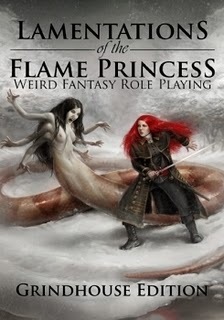
There's a reason I called the second game box, the one after I realized I could do this full time, the“Grindhouse Edition.” This is the feel we're after. Anything can happen, and whether any particularwork falls within someone's parameters of good taste is not our concern.
Whether there is room for that today is entirely up to the public and their willingness to dig a littlebit to find it. It might not be on the most convenient platforms. You might even have to order directfrom the publisher. That's what allows this stuff to still exist now and into the future in a culturalclimate that seems to demand you conform to Group A or Group B's standards in order to have anaudience.
8. Do you think roleplaying games have a unique potential to explore uncomfortable ordisturbing subject matter, more so than, say, literature or film? If so, why?
I think they have less potential. RPGs are all location and situation and setup, and then it's throughplay that things actually happen. The “emergent story” format of RPGs means that whatever comesout at the end is something of an accident, or the result of a succession of coincidences.
Literature and film and any medium where someone has complete control over the flow of theentire story means they can take uncomfortable subjects and do different things with themdeliberately and drive the point home through narrative and thematic context.
If the typical RPG group comes across the goings-on in, say, Salò, there's going to be an explorationof a very different kind of violence than the film invites us to explore, I dare say.
9. Finally, if Lovecraft were alive today, do you think he’d approve of Lamentations ofthe Flame Princess? Or would he recoil in horror?
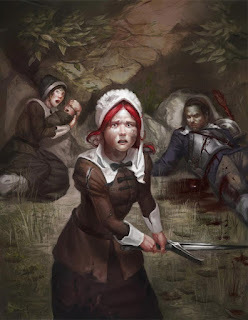 The more interesting question is if Lovecraft were alive today, what would all these people who have appropriated his work and in some cases owe some substantial portion of their incomes to their use of his work, think of him?
The more interesting question is if Lovecraft were alive today, what would all these people who have appropriated his work and in some cases owe some substantial portion of their incomes to their use of his work, think of him?Can you imagine Lovecraft stepping through a time portal from the mid-1930s, with all the attitudes from then intact, seeing what's become of his work, and deciding to try to get writing jobs from the publishers selling books based on his work? That would be much more amusing.
As for what Lovecraft would think of LotFP? Oh he'd hate it. He's from a wealthy family that fell on hard times, and apparently carried himself with a sort of upper class manner, thought of himself as a gentleman, and for the first forty years of his life he was deeply conservative, and I'm this racial mongrel (Italians and Poles were two immigrant groups he didn't much care for) kid from the projects who is a fan of and influenced by and I guess producing the lowest of the arts.
And one of those influences is the old pulp author H.P. Lovecraft. I love you, man.
James Maliszewski's Blog
- James Maliszewski's profile
- 3 followers



